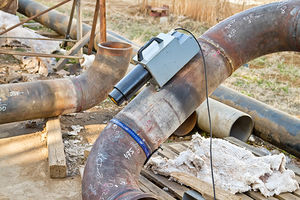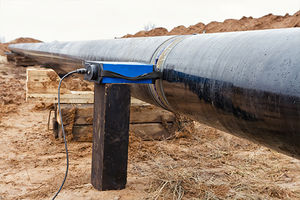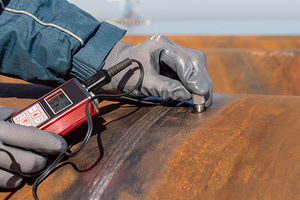 CUI can be very difficult to evaluate because it is hidden under the insulation and it is often only detected when there are visible leaks in pipes or systems. Evaluating is further compounded by the fact that removing insulation to inspect for CUI is costly and can be logistically complicated. However difficult, you can’t just ignore CUI inspections. When evaluating inspection options it is important to remember that there are advantages and disadvantages to each, but there are four non-destructive ways to check for CUI to choose from making this process easier.
CUI can be very difficult to evaluate because it is hidden under the insulation and it is often only detected when there are visible leaks in pipes or systems. Evaluating is further compounded by the fact that removing insulation to inspect for CUI is costly and can be logistically complicated. However difficult, you can’t just ignore CUI inspections. When evaluating inspection options it is important to remember that there are advantages and disadvantages to each, but there are four non-destructive ways to check for CUI to choose from making this process easier.
Visual Inspection
Visual inspection is the simplest method which involves removing the covering, visually examining the surface for any signs of corrosion or damage, and then replacing the insulation. It is effective but the downside is that it is expensive and engineers are only able to inspect the outer areas of the piping for defects and not the internal space.
Radiography
 Radiography is another common CUI inspection method. This X-ray technology is used in a variety of ways, such as real-time radiography (RTR), computed radiography (CR) and digital detector arrays (DDA). Each method operates on the principle of X-rays providing a view of a pipe’s diameter profile through the insulation and highlighting areas of change or thickness, which can indicate a build-up of corrosion. Advantages include portability, fast analysis, traceability and digital archiving.
Radiography is another common CUI inspection method. This X-ray technology is used in a variety of ways, such as real-time radiography (RTR), computed radiography (CR) and digital detector arrays (DDA). Each method operates on the principle of X-rays providing a view of a pipe’s diameter profile through the insulation and highlighting areas of change or thickness, which can indicate a build-up of corrosion. Advantages include portability, fast analysis, traceability and digital archiving.
 Ultrasonic Thickness Measurement (UT)
Ultrasonic Thickness Measurement (UT)
Ultrasonic thickness measurement (UT) is an effective, highly accurate and versatile remote visual inspection technique that is widely used in many industries. It works on the principle of the movement of ultrasound waves, and can measure wall thickness through a variety of linings and coatings.
Pulsed Eddy Current (PEC)
Pulsed eddy current (PEC) uses electromagnetic waves to determine the wall thickness of any material that conducts electricity. This method delivers a high degree of accuracy even though the probes don’t require contact with the test surface, but because the technology only provides an average wall thickness it is generally only used as a screening technique and not for detecting isolated areas of corrosion.
Summary
This is a very broad overview of the various inspection methods for corrosion under insulation, and any decision on the most appropriate technology - or combination of technologies - for a specific application warrants much closer examination and understanding. To read the full article, please visit: www.corrosionpedia.com/the-4-best-nondestructive-inspection-methods-for-corrosion-under-insulation/2/6962
